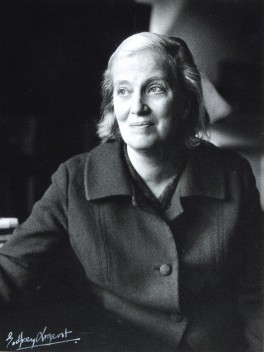Following the Sex Disqualification (Removal) Act of 1919, the Royal Society nominated and elected its first female Fellows in 1945. But long before this female authors had published in the Society’s Philosophical Transactions and the Proceedings.

There had been a steady, small trickle of female authors since the 1890s. They would often publish with husbands or colleagues, but there was also a noticeable group of solo female authors, often tied to the early women’s right movement.
Until 1990 (there was a brief experiment in 1974), authors needed to go through a fellow in order to have their paper officially communicated, reviewed and published at the Society. The official role of a communicator was thus held only by men for most of the Society’s history. By the 1960s crystallographer Kathleen Lonsdale and biochemist Dorothy Hodgkin were the most active female referees and occasional communicators of papers at the Society, having been elected to the Fellowship in 1945 and 1947 respectively, and having since been joined by almost 200 other women.
Despite this expansion, male referees sometimes included their personal opinions about female authors in their referee reports. Some female authors were cautioned against being ‘too ambitious’, or for using ‘emotional’ language. The private lives and marriage status of female authors were sometimes discussed too, not in terms of who they published with, but whether they would stay in the field after starting a family. Comments like these would be cut and pasted by the Secretary and then sent to authors, so that they did not see the original report or such remarks. Although opinions such as these were of their time, comments about female author’s work would sometimes be judged along these lines until the 1980s, when the referee reports became more formalized and professional in tone.
Despite this, sexism in referee reports only occurred in a small number of cases. On a whole, men and women reviewed each other with great respect, often adding pages of extra comments to help the author get their manuscript out. This collegiate tone is reflected in referee reports throughout the twentieth and twenty-first century at the Society. This, along with increasing gender diversity in journal editorial committees, makes the comments about ambition and gender in the past all the more disappointing.
Dr Camilla Mørk Røstvik is currently a Research Fellow on the AHRC project ‘Publishing the Philosophical Transactions – the economic, social and cultural history of a learned journal, 1665–2016‘ with the University of St Andrews. This blog post draws on materials from the Royal Society’s archives, and is currently being expanded into a longer paper.
